October 4, 2003
Doctor Paul R. Meyer Jr. is a noted surgeon and professor of spinal cord surgery at Northwestern University Memorial Hospital in Chicago. The author is the head of ESOP Trustee Services at LaSalle Bank NA, also in Chicago. Both are pilots. Dr. Meyer owns a Cessna 310 twin-engine airplane that both enjoy flying. The two have flown together many times, but until this Flying Road Trip, never overnight. For two years they had talked about a longer trip and finally the opportunity presented itself.
The planning started in June of 2003 as a series of business trips during the first week of October to attend shareholder meetings for the author’s clients. The trip was originally to start on a Sunday afternoon in Chicago and run through Austin, Texas, Greensboro, Alabama, Atlanta, Georgia and Defiance Ohio. Atlanta was hosting the World Golf Championships at the Crabapple course of the Capital City Country Club. Defiance Ohio was hosting a two-day Twin Cessna Flyers Engine and Propeller seminar. Finally, the trip was to terminate back to Chicago.
Well, nothing goes as planned. By the middle of August, the Austin shareholder meeting had been postponed. By the first of September, the Greensboro shareholder meeting was also postponed. While the cross-country trip was in jeopardy, both were still registered for the seminar in Defiance Ohio. Dr. Meyer persistently needled the author about his inability to control his clients and his calendar.
Somewhere in the middle of all this planning, Dr. Meyer decided to close his office and retire from the active practice of surgery effective October 1st. It was a huge step that he took with considerable reluctance and trepidation.
The author went to work with his clients to restructure the schedule and make it a meaningful trip to spend quality time with clients, while still experiencing an extended cross-country flight in the Cessna.
The revised Flying Road Trip was now to start on Tuesday and still end on Saturday night. The trip was to go from Chicago to Delphi Indiana to Lufkin Texas to Atlanta Georgia to Defiance Ohio and back to Chicago. Now it was Dr. Meyer’s turn to throw in a monkey wrench. He had a meeting Tuesday morning that would have delayed the start of the trip and potentially disrupted the first stop. But, after a few phone calls and several hours later, Dr. Meyer’s meeting was postponed a week and the trip was back on the revised schedule.
Tuesday, September 30, 2003
The trip started Tuesday morning September 29th. The author picked Dr. Meyer up at 7:30 AM. As usual, the author was a few minutes late and, as usual; Dr. Meyer was not only on time, but also early. So, as the author arrived to pickup Dr. Meyer, of course the doctor was waiting at the curbside, using his cellular telephone to check voicemail.

Unaffected by this feeble attempt at intimidation, the author picked up Dr. Meyer and the Flying Road Trip commenced.
The drive to Gary-Chicago Airport was uneventful, interrupted only by a stop at the Chicago Skyway MacDonald’s for two cups of coffee and two Egg McMuffins to go. With some minor pulling of teeth, Gary Jet Center sent a fuel truck to the hanger to fill all the available tanks on the airplane in anticipation of the long trip.
Dr. Meyer accomplished the preflight check of the airplane, while the author loaded the baggage aboard the plane and parked the car.
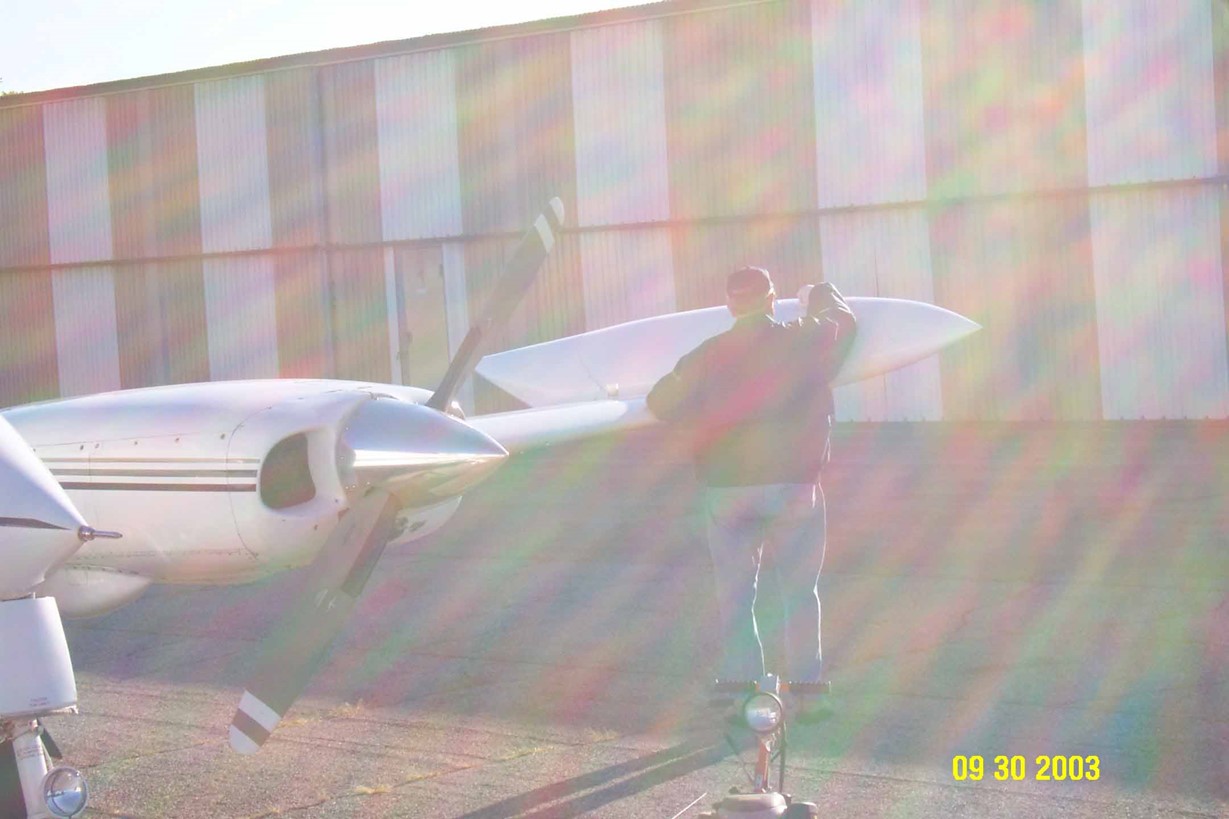
With the author at the controls for the first leg, the two took off shortly after 9:00 AM for the 30-minute flight to Delphi Indiana. The landing was uneventful. The plane was parked near the self-service fuel pumps to facilitate topping-off the tanks for the next leg of the journey. Although the local FBO (fixed base operator) building was unlocked and open, there was no one in the building — or on the field for that matter. We were alone.
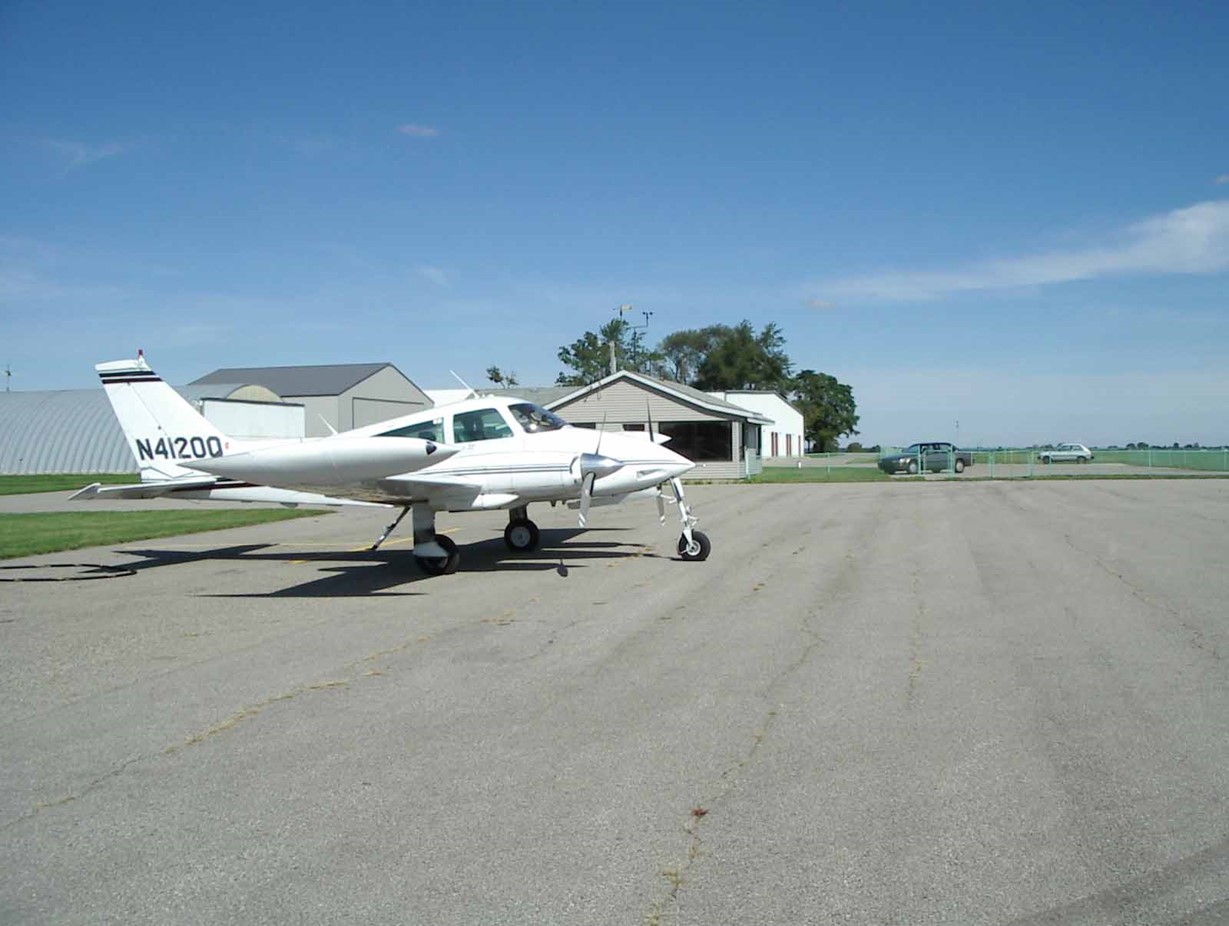
While Dr. Meyer settled in with a newspaper, the author was picked up by his client and driven to their offices.
Delphi Indiana is a very small town near Lafayette and is noted for pork slaughtering and packing. The client was the second largest employer. The meeting with company executives and a walking tour of the factory ended about an hour and a half later with the author being dropped off back at the airfield.
Just about then, a young man arrived who took care of topping-off the plane’s fuel tanks. While he was processing our credit card to pay for fuel, his parents arrived and were full of congratulations on the birth of his first baby the night before. Now we had a perfectly acceptable explanation for why he was late for work.
With the tanks full, Dr. Meyer at the controls and a four-hour flight ahead, the duo took off heading south. Delphi was too small to have a control tower and was too far from Indianapolis Center to communicate while on the ground. Once airborne, communication was established with Indy Center and the clearance for the flight to Lufkin was obtained.
The airplane performed flawlessly, climbing to 10,000 feet and settling in at 195 knots of ground speed, helped by a 25-knot tail wind.
About an hour into the flight we were in for a pleasant surprise. Both were getting a little hungry and Dr. Meyer’s wife, Lesa, had sent along a “care package” with candy bars, raisins, and nuts. Pulling out one of the boxes, we discovered a photograph of Lesa to which she had attached a bubble over her head wishing us a good flight. The snacks were perfect and very much appreciated.
The flight to Lufkin Texas was about four and one half hours in duration. The flight encountered some icing at 10,000 feet in the Arkansas area. The airplane was in the clouds and the outside air temperature was 0 degrees centigrade. Careful observation of the leading edges revealed no ice adhering to the wings but there was some on the propeller spinners. After about an hour in the clouds, the temperature began to rise and the threat of icing disappeared.
It was a bright sunny day in Lufkin Texas as Dr. Meyer flew a visual approach to runway 03. It was about 4:30 PM when the plane was parked in front of the local terminal. The two had planned to meet Newt Courtney at the airport to look at his home-built Lancair airplane. Having arrived about 45 minutes early, however, Newt was not yet at the airport. The two took some time to examine other hangers on the field, which housed some very interesting historic airplanes along with a very unusual powered glider.

A loud buzzing was heard as not one but two small home-built airplanes landed and taxied up. Newt Courtney was in the Lancair and Jim Bob Odem was in his Vans RV6. Following brief introductions, Dr. Meyer joined Newt and the author joined Jim Bob for a playful flight around East Texas, terminating with a landing at the grass strip behind Jim Bob’s house. There we examined a dune buggy the two were constructing.

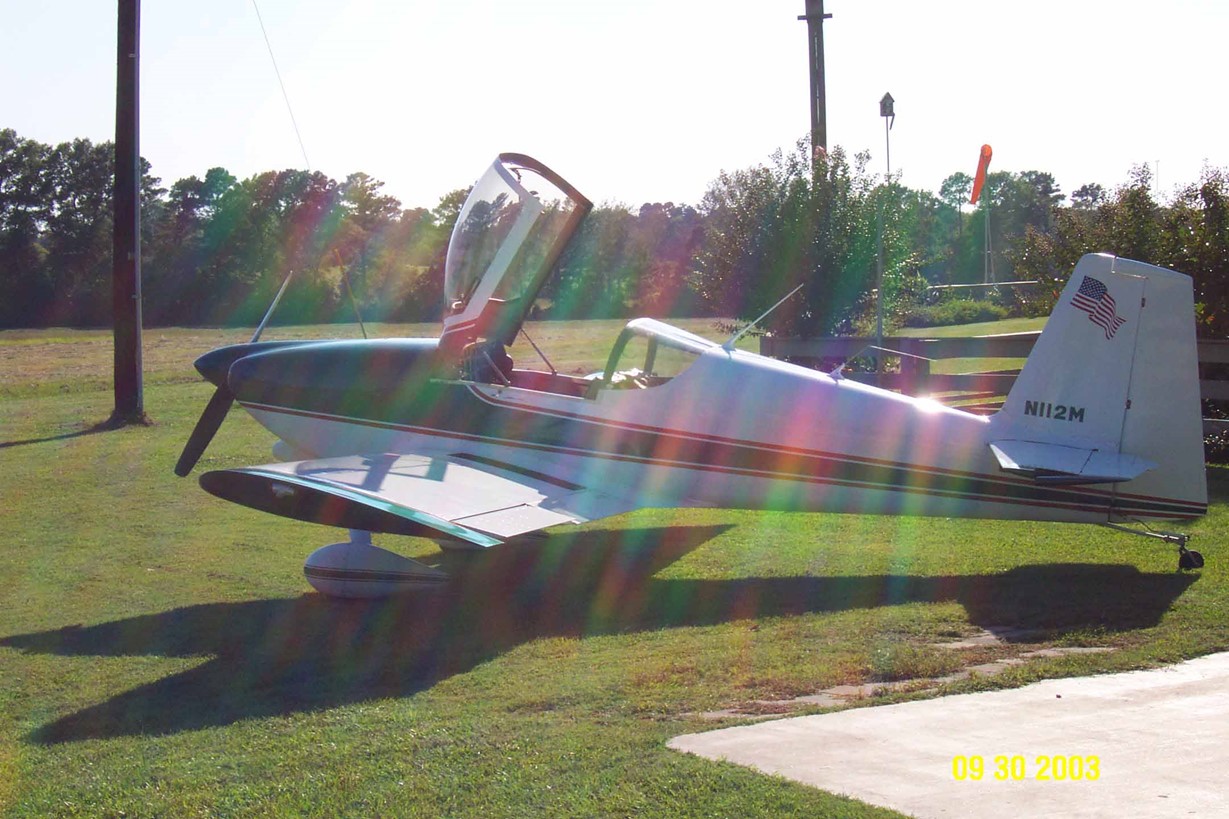
Above is a picture of the Vans RV6 built by Jim Bob.Odem
Climbing back into the two home-built airplanes, they took off and flew some formation work while the author took some pictures. These are pictures of Newt and Dr. Meyer in Newt’s Lancair airplane.


Newt Courtney and Dr. Meyer back at the Lufkin airport.
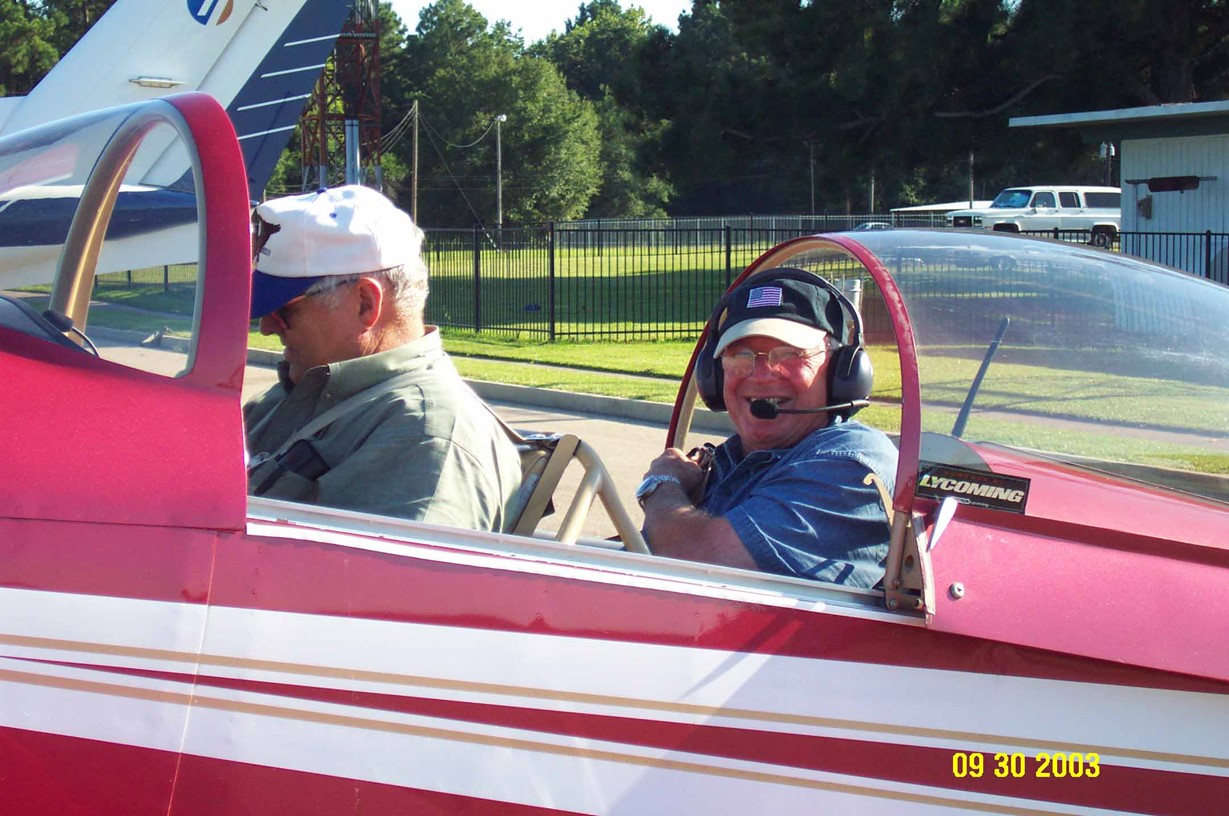
Newt took us over to the Lufkin Industries hanger to introduce us to his son. His son is a corporate pilot for Lufkin Industries and took us into the hanger to show us the two-week old Citation Jet the company had just purchased.
Newt’s grandson had just signed up for the Army and both Newt and his son had a lot of questions for Dr. Meyer who is a retired Army colonel. Dr. Meyer went a long way toward assuring them that the grandson was making a good decision that would profoundly improve his life.
The flying fun and games were over for the evening and it was time to meet six executives from a client for dinner. Dr. Meyer joined us so there were eight for dinner. Later the group assembled in a small park outside the restaurant for an after dinner cigar and conversation.
Wednesday, October 1, 2003
Wednesday morning came early when the duo was picked up at the motel and driven to the client offices. This was the first official day of Dr. Meyer’s retirement. At the client’s offices, we separated. Dr. Meyer took a tour of the client’s distribution center and the author met with several executive officers on business matters.
At about 11:30 we were driven back to the Lufkin airport to begin the next leg of the trip, this time to Atlanta. Or so we thought.
During the preflight check, Dr. Meyer discovered that the alternator on the right engine was loose. This was a repeat of a problem that had been experienced several months before and was not to be trifled with. We knew immediately that we weren’t going anywhere until the right alternator was examined by certified A&P (Aircraft and Power plant) mechanic.
Angelina County Airport in Lufkin is not a big airport. There is no A&P mechanic on duty. The author wandered around the field looking into hangers until he discovered two pilots working at replacing lights in their hanger. They were extremely helpful. They knew an A&P mechanic who worked on Cessnas, but he was at a different airport. They managed to get him on his cellular telephone. After a brief conversation describing the problem, the A&P, John Hammon, agreed to drive over to Lufkin and attempt to assist us. He advised, however, that it would be two hours before he could get there.
With two hours to kill, the two checked for any voice messages and then took seats in the airport restaurant for one of the best cheeseburgers in Texas. After lunch, they settled down in the lounge area and caught a few winks.
John arrived almost exactly when he said he would and he came equipped with some parts that he thought might be necessary. John started by removing the alternator to examine it.
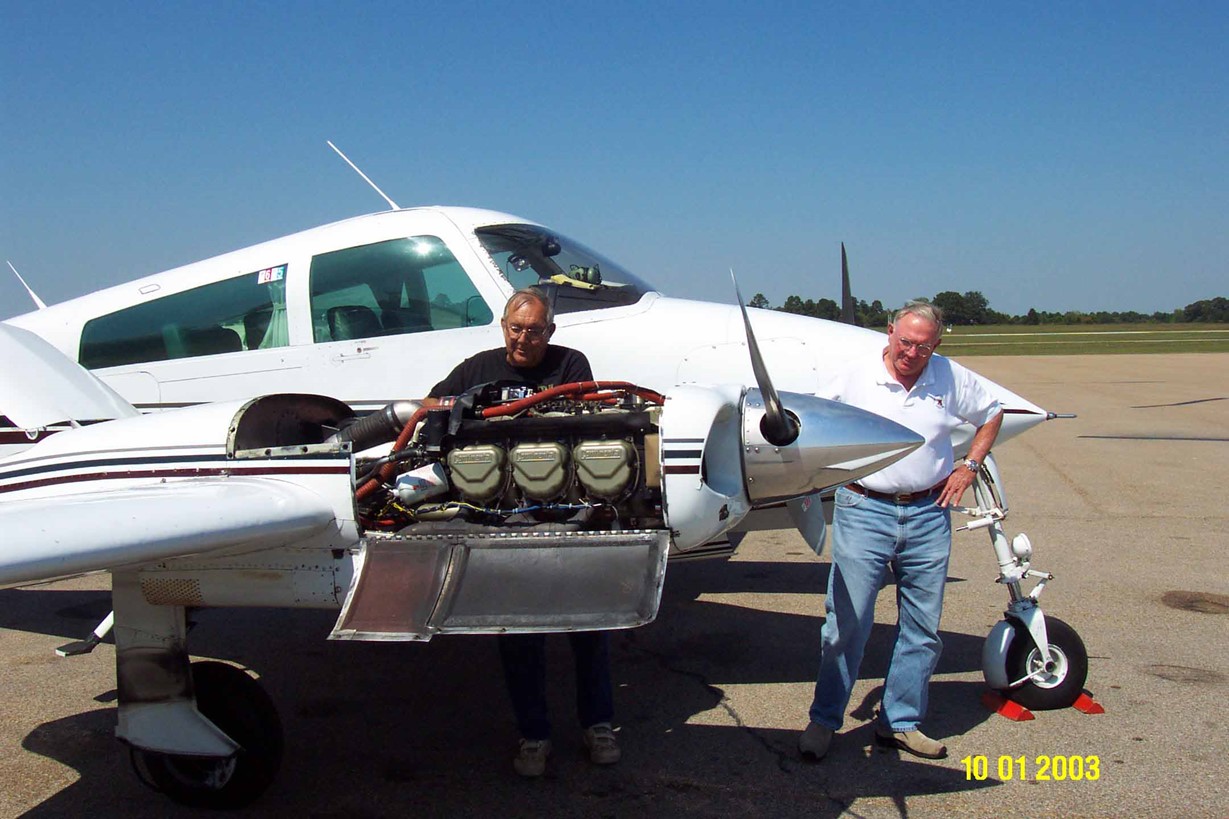
While there were no broken parts, it was clear that the large ‘through bolt’ that carries the weight and strain of the alternator was too small for the alternator and allowed considerable play. John put everything back together and was in the process of tightening the ‘through bolt’ when disaster struck.

While tightening the ‘through bolt’, the head popped right off of the bolt with a sickening “clack”. We all then knew this would be no easy fix. It took John the next half hour to remove the broken bolt from the airplane. He then disappeared for an hour in search of a replacement. He expressed considerable doubt that he would be able to locate a replacement and it might have to be ordered for overnight delivery.
Today we were to be lucky, however. John was able to locate a ‘grade 8’ bolt exactly the right size from a local fastener distributor. He installed the alternator with the new bolt and reconnected everything and gave us the green light to proceed on our Flying Road Trip.

The author had to delay things for about 45 minutes while he participated in a work-related conference call. Dr. Meyer filed the flight plan and soon we were off again with the author at the controls for this leg to Dekalb-Peachtree Airport in Atlanta Georgia.
The trip was generally uneventful except the last half was made after dark. The transfer pump that would move fuel out of the wing locker tank and into a main tank where it could be utilized did not work. We had 20 gallons of fuel trapped in the wing locker tank that we couldn’t use. Fortunately, we had almost twice as much fuel on board as we needed, so there was no danger.
We landed at the Dekalb-Peachtree Airport and parked at the Epps Aviation FBO. Pat Epps is one of the backers and participants in the successful effort to retrieve the P-38 from deep in the ice in Greenland.
We were parked among hundreds of corporate jets that were visiting that airport. Their owners were probably also in Atlanta for the World Golf Championship.
They immediately towed our airplane out to an unused runway where dozens of more airplanes were parked.

We rented a car and following the directions printed out from Mapquest, we drove to our hotel.
Thursday, October 2, 2003
Thursday morning we drove to the Capital City Club Crabapple Course to see the World Golf Championship. We had tickets provided by Valuemetrics, Inc., which included admission to the Federation Club hospitality tent. We went to the tent to meet our hosts. No cameras or cell phones were allowed on the course, unfortunately.
After a warm welcome, the attendees split up and Dr. Meyer and the author located excellent seats that provided views of the par 4 11th fairway and green as well as the par 3 15th green. Our heads were on a swivel as we switched our attention between 11 and 15. We saw great golfers on both holes. The 15th hole was a 220-yard par 3. We watched 8 pairs of golfers come through and no one could birdie the hole.
Then we saw huge throngs of people moving in the distance as Tiger Woods approached the 15th tee. Literally thousands of people follow his every move on a golf course. Tiger’s drive was on the green, but well short of the hole. He was 35 to 40 feet away with an uphill putt.
NOBODY else had birdied the hole. He took his time. He walked up to the hole twice. Studying the slope and the lay of the green. He paused over his ball. Complete hush fell over the crowd. He stoked his putt. As the ball got closer and closer to the hole, the crowd got louder and louder. Finally, the ball dropped for a birdie and the crowd went crazy.
Those who had been following Tiger probably had faith that he could make the putt. Those of us who had been watching the hole for 2 hours had watched other big names try and fail. It was truly an amazing putt. He is truly an amazing golfer.
After that scene, everything else would be anticlimactic. Dr. Meyer and I went back to the Federation Club tent and caught up with some of our hosts to say our farewells.
We then made the long trek back to the car. We both checked our voice messages. Dr. Meyer filed our flight plan. Then, following directions from Mapquest, we made our way back to the airport.
The plane was ready. Dr. Meyer did the preflight and then took the left seat for the trip to Defiance Ohio.
The weather for this leg of the trip was very nice. We crossed the Great Smokey Mountains and the Appalachians at 11,000 feet. This time the transfer pumped worked as advertised and we got access to all the fuel we had on board. We arrived at Defiance at about 5:30 for the Twin Cessna Pilot Engine Seminar. While they were expecting us, neither they nor we had made any plans for our transportation to the hotel.
We had noticed that a Cessna 421 was taking off shortly after we landed. It turned out that this plane belonge4d to Phil who was taking Carl, a physician from New Jersey and Larry Ball, the organizer of the seminar up for a short flight. When they returned, Larry took Dr. Meyer and the author to their hotel.
When we got to the hotel it was too late and we were too tired to venture out looking for a place to have dinner, so we ordered from Domino’s. Since we were carrying a bottle of scotch with us, scotch and pizza became our dinner. We had had a very long day and needed to be up and ready for pickup at 7:30 EDT the next morning. We both crashed.
Friday, October 3, 2003
We gathered in the breakfast room of the Holiday Inn at 7:00 AM for a cup of coffee. Larry Ball was already there ready to take us to the airport and the seminar.
The flight line was full of twin-engine airplanes:

The seminar started at 8:30 AM. Larry Ball handled the syllabus for the seminar and then introduced Tony Saxton, the owner of TAS Aviation. Tony is an instructor pilot, aviation counselor and licensed A&P mechanic.
Friday focused on the engine crankcase, pistons and cylinders. We learned the difference among O, IO, TSIO, and GTSIO designations. We learned the differences among the 470, 520 and 550 Continental engines.
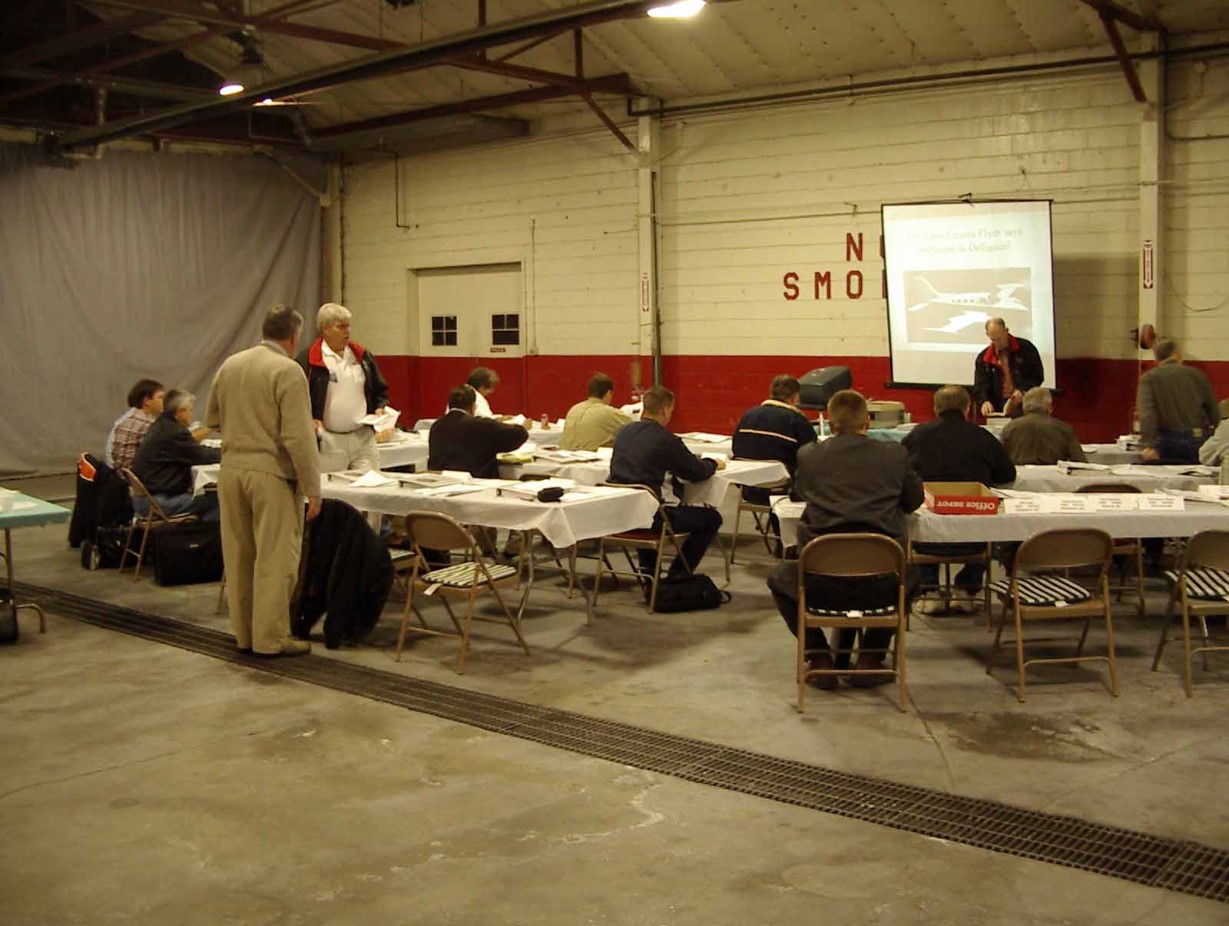
At the end of the day, Tony invited those who were interested in the Cessna 400 series wing strap AD (Airworthiness Directive) to stay around for a detailed explanation. Dr. Meyer and I fly a Cessna 310 that is not affected by the AD and chose not to stay.
We caught a ride back to the hotel and walked across the highway in the rain to the Knights of Columbus hall for a fish fry. The dinner was delicious and included au gratin potatoes, green beans, and baked beans (“Blazing Saddles”) in addition to wonderful fried flounder.
Back in the room we watched the start of the Chicago Cubs vs Atlanta Braves playoff game. Neither of us made it to the end before falling asleep.
Saturday, October 4, 2003
Neither of us slept well. Dr. Meyer reported loud snoring (mine) that kept him up for a while. The author got up at 4:45 and went down to the breakfast room to read. Again at 7:00 AM the pilots gathered in the breakfast room to share rides back to the seminar. This time everyone had their entire luggage with them so they could depart for home at the seminar’s conclusion.
The seminar on Saturday focused on the ignition systems, the fuel systems and the exhaust systems. Tony was supposed to cover some operational procedures for pilots but never got around to them. He was kept busy answering numerous questions from the pilots and mechanics in the audience.
During the seminar, Dr. Meyer and I had a conversation with the chief mechanic for TAS Aviation about the alternator problem we had experienced in Lufkin Texas. He agreed to fix the alternator without charge if we would leave the airplane with them through Tuesday and accept a flight back to Chicago from another pilot. We accepted the offer and flew back to Chicago with Joe and Phil.
We arrived back at the Gary-Chicago Airport at about 4:00 PM, in time for Dr. Meyer to attend a friend’s wedding with his wife Lesa.

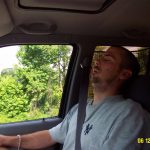
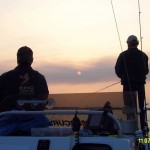
Absolutely loved reading this… albeit 14 years after the ‘flying road trip’ took place! Came across this purely by accident when I saw a photo that looked vaguely familiar on a Google lookup. Imagine my surprise at coming across this blog post. Loved the travelogue and photos. Dad cherished these days spent flying with you.. and of course cherishes you as one of his dearest friends. Take care Vaughn! ~ Kristin Meyer (Dr. Meyer’s daughter)